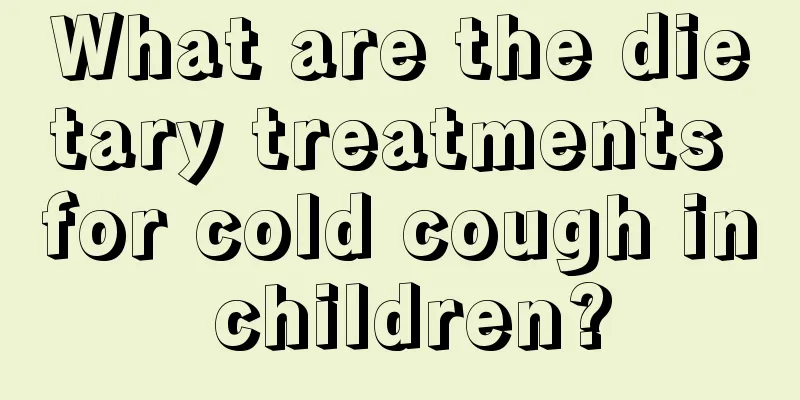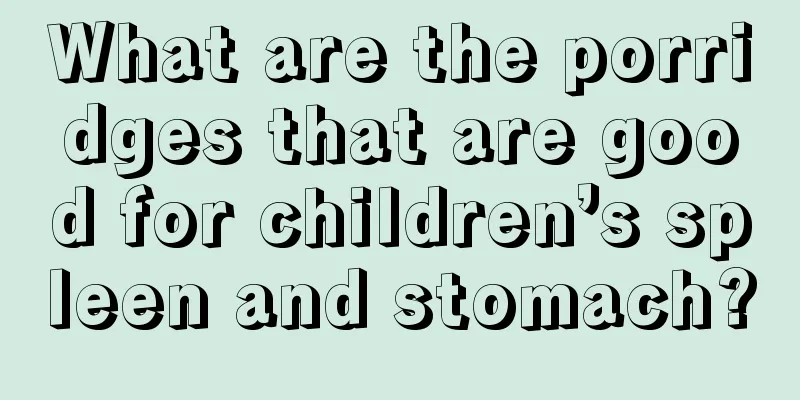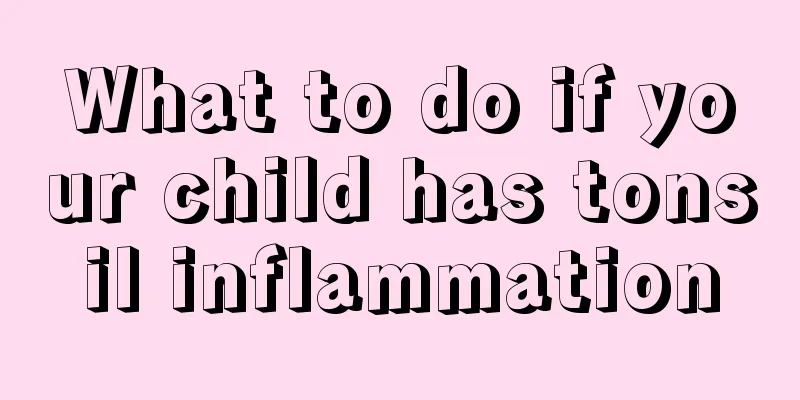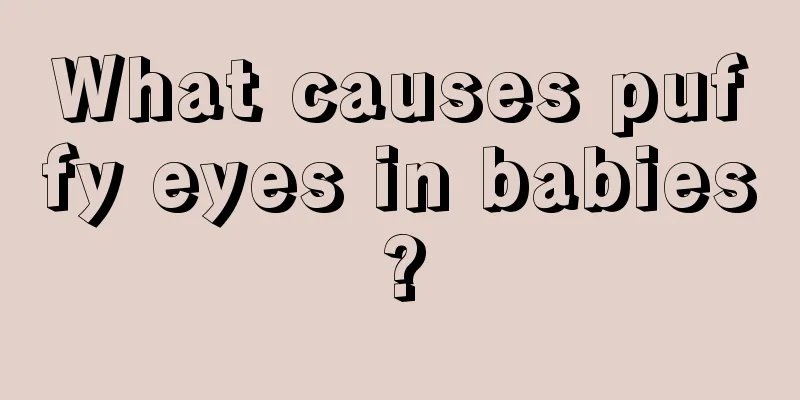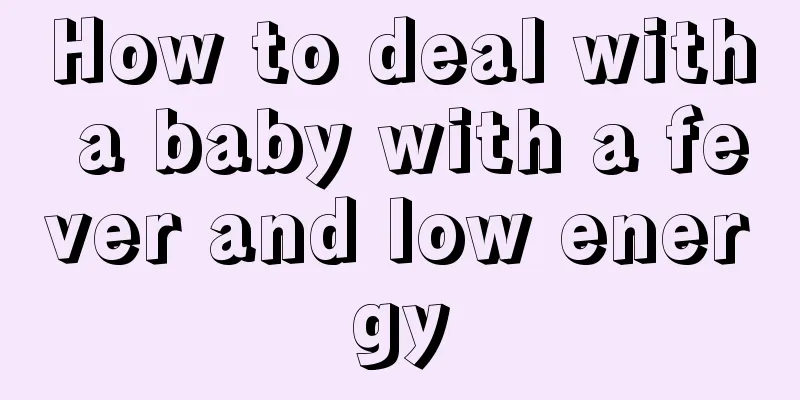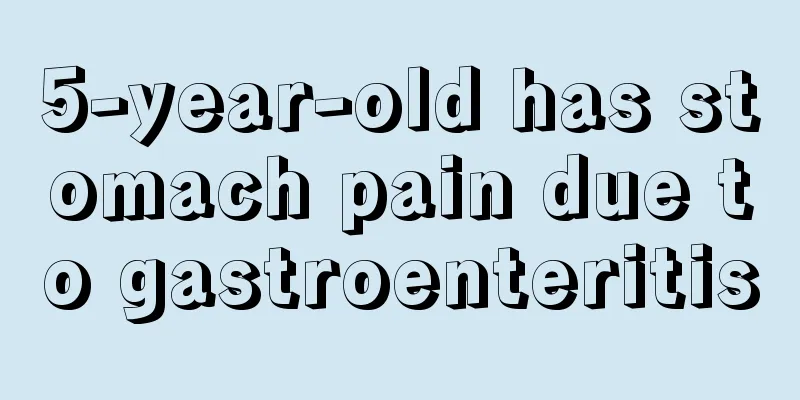Why does my baby cough and have repeated fever?

|
Mothers often become at a loss as to what to do because of the various symptoms their babies display. Many babies will experience repeated coughing and fever, which often makes mothers extremely worried. So what is going on with babies coughing and having repeated fever? Cough caused by pathological upper respiratory tract infection Symptoms: Mostly an irritating cough, like an itchy throat, without phlegm; occurring at any time of day or night, not accompanied by wheezing or shortness of breath. The baby is sleepy and has a runny nose, sometimes accompanied by fever, with the body temperature not exceeding 38℃; poor spirits and loss of appetite. After sweating and fever subside, the symptoms disappear, but the cough may continue for 3-5 days. Cough relief: When children have upper respiratory tract infection, their nasal mucosa is already inflamed. If they inhale dry air, their nasal cavity will become more uncomfortable and their cough will be aggravated. Therefore, to keep the air in the room moist, you can use a humidifier, hang a wet towel, mop the floor with water, or place a basin of clean water in the room to increase the air humidity. If your child's cough and nasal congestion symptoms persist for a week and do not improve, you should take your child to see a doctor as soon as possible. Cough caused by bronchitis Symptoms: Bronchitis usually follows a cold and is caused by a bacterial infection. The cough is accompanied by phlegm and is sometimes severe. The coughing is usually more frequent at night and there is a wheezing sound. The coughing is most severe two hours after the child falls asleep, or around 6 a.m. Cough relief: Go to the hospital for treatment and take pediatric cough suppressants prescribed by the doctor. Children should not eat foods that are too sweet or too salty, otherwise it will aggravate night coughs. Cough caused by pharyngitis Symptoms: Hoarseness, purulent sputum, little is coughed up and most is swallowed. Older babies will complain of sore throats, while babies who cannot express themselves often become irritable, refuse to feed, and make "hollow, hollow" sounds when coughing. Cough relief: In this case, parents should not solve the problem by themselves at home. They should seek medical attention in time and ask the doctor to make a clear diagnosis and provide symptomatic treatment. Allergic cough Symptoms: Continuous or recurrent severe cough, mostly in paroxysmal attacks, more obvious in the morning, coughing worse when the baby is active or crying, children tend to sneeze and cough when exposed to cold air, but with very little sputum. Coughing at night is more severe than during the day and lasts longer, usually lasting for 3 months, more often during the pollen season. Cough relief: Try to prevent your children from catching colds and go to the hospital to consult a doctor. For babies with a family history of asthma or other allergic diseases, special attention should be paid to coughing, and they should seek medical treatment as soon as possible, get a clear diagnosis, and actively treat it to prevent it from developing into asthma. The main symptoms are: generally no fever; spitting out white foamy sputum; liking to rub eyes and nose, and scratching scalp; sweating when sleeping, restlessness, and liking to sleep curled up; mostly coughing, no wheezing. There are three main characteristics of his cough: one coughs for a while at night; one coughs for a while when he wakes up in the middle of the night; and one coughs for a while when he wakes up in the morning. Some children can cough for three months in a row. Inhalation of foreign matter causes choking and coughing Symptoms: If the child has no previous symptoms such as coughing, runny nose, sneezing or fever, but suddenly develops severe choking and coughing, has difficulty breathing, and looks pale, especially for younger children, it is possible that the child put some foreign object into his mouth when the adult was not paying attention, and it accidentally entered the throat or trachea. Cough relief: After inhaling foreign objects, parents should encourage their children to cough, and never use their hands to pick around in their mouths to prevent the foreign objects from getting deeper and deeper and completely blocking the airway. If nothing is coughed up and the child coughs or wheezes repeatedly, it means that the foreign body has reached the lower respiratory tract and the child should be taken to the hospital immediately to remove the foreign body in time. TCM Pathology Disease name. Children's internal organs are delicate, and external and internal injuries can easily damage the lungs and cause coughing. Exogenous evils such as cold, heat, and dryness invade the lungs, causing the lung qi to rise against the flow; internally there is food stagnation, and the spleen is congested, causing dampness and phlegm, which accumulate and cause the lung qi to fail to flow; if the body is weak and coughing for a long time damages the body fluids, the virtual fire rises and burns the lung yin, causing the kidney to fail to receive qi. Clinically, it can be divided into two categories: external injury and internal injury. Exogenous coughs: such as cold cough, hot cough, sudden cough due to typhoid fever, cough due to lung congestion, cough due to lung heat, cough due to phlegm and heat, and cough due to autumn dryness; internal injury coughs: such as food accumulation cough, gurgling cough, saliva cough, cough with phlegm and blood, chronic cough due to lung dryness, chronic cough due to spleen deficiency, and chronic cough due to kidney deficiency. 1. Use your thumb to push the spleen meridian and lung meridian 100 times each. 2. Use the ribbed surface of your thumb to massage the inner Bagua area of the child's palm in a circular motion, for 1 minute on each hand. 3. Use your middle finger to massage the Tiantu and Tanzhong points in a clockwise direction for 2 minutes each. 4. Use your fingers to massage the lung points, cough and asthma points, and chest respiratory area, each point for 2 minutes. 5. Use your thumb to push the thenar area 100 times. The above is an article that introduces why babies cough and have repeated fevers. I believe that mothers who have read the article should be able to understand what causes these symptoms. And I know how to treat it. |
<<: Normal height for a 13-year-old
>>: How long is the treatment period for pneumonia in children?
Recommend
Why does the child not sleep and cry?
We all know that sleep is the best time for child...
What are the causes of eye inflammation in children?
Children suffer from eye inflammation more often ...
How effective is the children's cold antipyretic syrup
There are many common cold medicines for children...
What are the symptoms of high muscle tension in newborns?
The symptoms of high muscle tone in newborns are ...
How to deal with children's tonsil pus
If a child's tonsils are festering, this dise...
What’s going on if my baby has red bumps on his nose?
When red bumps suddenly appear on our skin and th...
Fetal kidney development
Many mothers don't know much about the growth...
What grains are good for children?
Whole grains are a type of relatively nutritious ...
How high does jaundice reach before it invades the brain?
Jaundice is a very common disease in newborn babi...
What is the reason why children always have runny noses?
Because the baby's body resistance is relativ...
What to do if your baby's eyes are red
Parents with children at home must have noticed t...
Cultivation of children's behavioral habits
The younger the child is, the more difficult it i...
What to do if red spots appear on children's bodies
I believe everyone knows the importance of skin t...
What are the symptoms of a baby's stomach discomfort?
Some babies have stomach discomfort, so they need...
What is the normal value of lymphocytes in children?
Children's health is a very important matter ...
